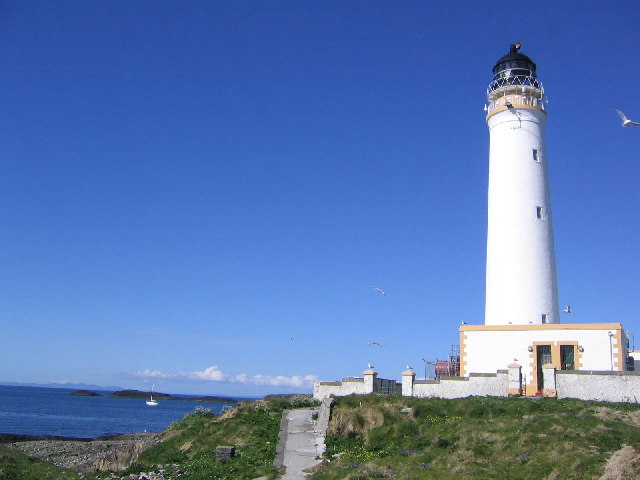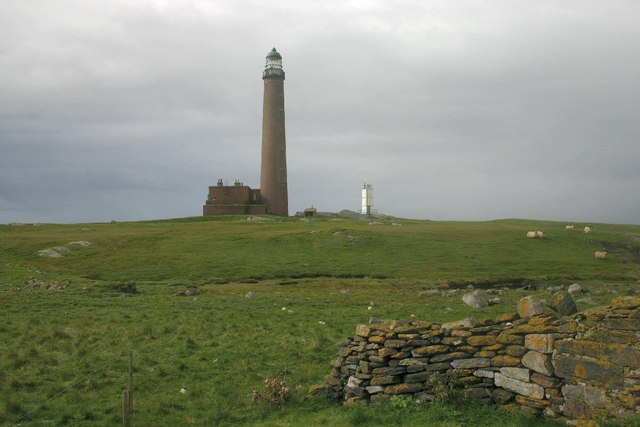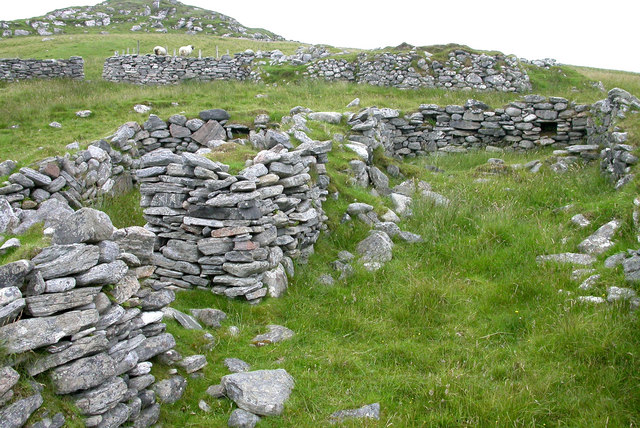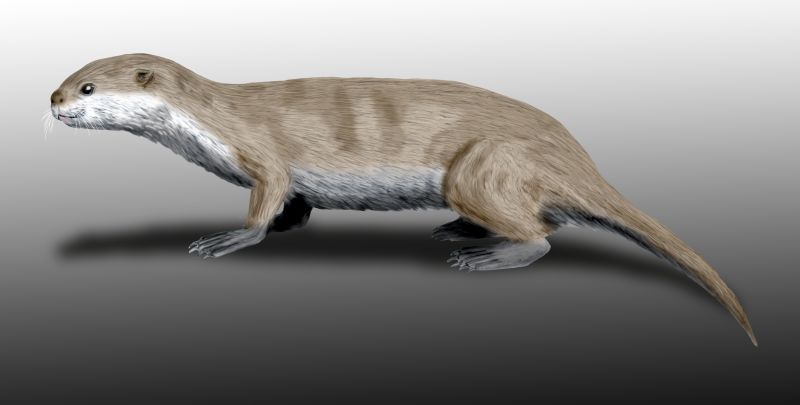|
Ć’igh-sgeir
Hyskeir () or Heyskeir is a low-lying rocky islet (a skerry) in the Inner Hebrides, Scotland. The Hyskeir Lighthouse marks the southern entrance to the Minch. Geography Hyskeir lies in the southern entrance to the Minch, 10 kilometres southwest of the island of Canna and 14 kilometres west of RĆ¹m. Garbh Sgeir is a rock that lies next to the islet and the landing place for Hyskeir lies in the channel between the two. Both islands are unoccupied. Ć’igh-sgeir is composed of hexagonal pitchstone columns. The owner of the island in the 19th and early 20th centuries was Philip Ollas. At that time sheep from Canna were brought to make use of the summer grazing. Etymology Hyskeir is from the Old Norse ''sker'' meaning skerry. ''Ć’igh-sgeir'' is Gaelic for 'maiden' or 'virgin rock', ''sgeir'' also meaning skerry. The English name 'Maiden Rock' has also been used. Lighthouse Hyskeir Lighthouse was established in 1904. The building marks the southern end of the Minch, warning of ... [...More Info...] [...Related Items...] OR: [Wikipedia] [Google] [Baidu] |
Garbh Sgeir
Garbh Sgeir (Gaelic: 'rough skerry') is a rock about 100 metres west of the islet Ć’igh-sgeir, in the Small Isles, Lochaber, Scotland. There is an anchorage between the two. It is not to be confused with the nearby islet of the same name that lies 400 m east of the southern tip of the island of Eigg, north of Eilean Chathastail. The rock is home to a large colony of seabirds, and is protected by Scottish Natural Heritage NatureScot () is an executive non-departmental public body of the Scottish Government responsible for Scotlandā€™s natural heritage, especially its natural, genetic and scenic diversity. It advises the Scottish Government on nature conservati .... References * Haswell-Smith, Hamish (2004) ''The Scottish Islands''. Edinburgh. Canongate. * Murray, W.H. (1966) ''The Hebrides''. London. Heinemann. Small Isles, Lochaber Skerries of Scotland Islands of Highland (council area) {{Lochaber-geo-stub ... [...More Info...] [...Related Items...] OR: [Wikipedia] [Google] [Baidu] |
Monach Islands
The Monach Islands, also known as Heisker ( / , ), are an island group west of North Uist in the Outer Hebrides of Scotland. The islands are not to be confused with Hyskeir in the Inner Hebrides, or Haskeir which is also off North Uist and visible from the group. Geology and geography The main islands of (once home to a nunnery), and Shivinish () are all linked at low tide. It has been claimed that it was at one time possible to walk all the way to Baleshare, and on to North Uist, five miles away at low tide. In the 17th century, a large tidal wave is said to have washed this route away. The islands of the group tend to be low-lying and sandy, subject to intense coastal erosion. Not unlike the Isles of Scilly it is possible that , Shivinish and formed a single body of land within historic times, and that their land area has greatly decreased due to overgrazing, sea inundation, and wind erosion. Smaller islands in the group include Deasker (), Shillay () and (or St ... [...More Info...] [...Related Items...] OR: [Wikipedia] [Google] [Baidu] |
Charles Alexander Stevenson
Charles Alexander Stevenson MICE MIEE FRSE (23 December 1855, ā€“ 9 May 1950) was a Scottish lighthouse engineer who built twenty-three lighthouses in and around Scotland. Life He was born at 8 Forth Street in the east part of Edinburgh's New Town The family moved to 20 Royal Terrace on Calton Hill shortly after his birth. Born into the famous Stevenson family of lighthouse engineers, son of David Stevenson and his wife Elizabeth Mackay, brother of David Alan Stevenson, and nephew of Thomas Stevenson, he was educated at Edinburgh Academy 1866 to 1872 then studied mathematics and engineering at the University of Edinburgh where he graduated BSc. He joined the family business of lighthouse design in 1875 remaining unpaid as a family member until 1887 when his uncle, Thomas Stevenson died, after which he became a partner. Between 1887 and 1937 he built 23 lighthouses with his brother, David, and is noted for his experiments with optics. He also improved foghorns and created h ... [...More Info...] [...Related Items...] OR: [Wikipedia] [Google] [Baidu] |
Skerries Of Scotland
A skerry is a small rocky island, usually defined to be too small for habitation. Skerry, skerries, or The Skerries may also refer to: Geography Northern Ireland * Skerries, County Armagh, a townland in County Armagh * Skerry, County Antrim, a parish in County Antrim *The Skerries, Northern Ireland Republic of Ireland *Skerries, Dublin, a seaside town in Fingal, County Dublin ** Skerries railway station * Skerries, County Kildare, a townland in County Kildare Russia * Minina Skerries *The area surrounding Taymyr Island * Sumsky Skerries Scotland *Sule Skerry *Skerryvore *A number of locations in the Orkney Islands ** Auskerry ** Pentland Skerries *A number of locations in the Shetland Islands **Out Skerries **Gaut Skerries, in the Ramna Stacks **Ve Skerries South Georgia * Skrap Skerries United States * Skerry, New York Wales *The Skerries, Isle of Anglesey Australia * The Skerries (Victoria) Literature and music *Skerry, a fictional mammal in Neal Stephenson's nov ... [...More Info...] [...Related Items...] OR: [Wikipedia] [Google] [Baidu] |
List Of Islands Of Scotland
This is a list of islands of Scotland, the mainland of which is part of the island of Great Britain. Also included are various other related tables and lists. The definition of an offshore island used in this list is "land that is surrounded by seawater on a daily basis, but not necessarily at all stages of the tide, excluding human devices such as bridges and causeways". Scotland has around 900 offshore islands, most of which are to be found in four main groups: Shetland Islands, Shetland, Orkney Islands, Orkney, and the Hebrides, sub-divided into the Inner Hebrides and Outer Hebrides. There are also clusters of islands in the Firth of Clyde, Firth of Forth, and Solway Firth, and numerous small islands within the many bodies of fresh water in Scotland including Loch Lomond and Loch Maree. The largest island is Lewis and Harris, which extends to , and there are a further 200 islands which are greater than in area. Of the remainder, several, such as Staffa and the Flannan Isles, ... [...More Info...] [...Related Items...] OR: [Wikipedia] [Google] [Baidu] |
Pinniped
Pinnipeds (pronounced ), commonly known as seals, are a widely range (biology), distributed and diverse clade of carnivorous, fin-footed, semiaquatic, mostly marine mammals. They comprise the extant taxon, extant families Odobenidae (whose only living member is the walrus), Otariidae (the eared seals: sea lions and fur seals), and Phocidae (the earless seals, or true seals), with 34 extant species and more than 50 extinct species described from fossils. While seals were historically thought to have descended from two ancestral lines, molecular phylogenetics, molecular evidence supports them as a monophyletic group (descended from one ancestor). Pinnipeds belong to the suborder Caniformia of the order Carnivora; their closest living relatives are musteloids (Mustelidae, weasels, Procyonidae, raccoons, skunks and red pandas), having diverged about 50 million years ago. Seals range in size from the and Baikal seal to the and southern elephant seal. Several species exhibit ... [...More Info...] [...Related Items...] OR: [Wikipedia] [Google] [Baidu] |
Eider Duck
The eiders () are large Mergini, seaducks in the genus ''Somateria''. The three extant species all breed in the cooler latitudes of the Northern Hemisphere. The down feathers of eider ducks and some other ducks and geese are used to fill pillows and quilts—they have given the name to the type of quilt known as an eiderdown. Taxonomy The genus ''Somateria '' was introduced in 1819 to accommodate the king eider by the English zoologist William Elford Leach, William Leach in an appendix to John Ross (Royal Navy officer), John Ross's account of his voyage to look for the Northwest Passage. The name is derived from Ancient Greek : ''sŨma'' "body" (stem ''somat-'') and : ''erion'' "wool", referring to down feather, eiderdown. Steller's eider (''Polysticta stelleri'') is in a different genus despite its name. Species The genus contains three Extant taxon, extant species. Two undescribed species are known from fossils, one from Middle Oligocene rocks in Kazakhstan ... [...More Info...] [...Related Items...] OR: [Wikipedia] [Google] [Baidu] |
Common Tern
The common tern (''Sterna hirundo'') is a seabird in the family Laridae. This bird has a circumpolar distribution, its four subspecies breeding in Temperateness, temperate and subarctic regions of Europe, Asia and North America. It is strongly bird migration, migratory, wintering in coastal Tropics, tropical and Subtropics, subtropical regions. Breeding adults have light grey upperparts, white to very light grey underparts, a black cap, orange-red legs, and a narrow pointed bill. Depending on the subspecies, the bill may be mostly red with a black tip or all black. There are several similar species, including the partly Sympatry, sympatric Arctic tern, which can be separated on plumage details, leg and bill colour, or Bird vocalization, vocalisations. Breeding in a wider range of habitats than any of its relatives, the common tern nests on any flat, poorly vegetated surface close to water, including beaches and islands, and it readily adapts to artificial substrates such as ... [...More Info...] [...Related Items...] OR: [Wikipedia] [Google] [Baidu] |
Arctic Tern
The Arctic tern (''Sterna paradisaea'') is a tern in the family Laridae. This bird has a circumpolar breeding distribution covering the Arctic and sub-Arctic regions of Europe (as far south as Brittany), Asia, and North America (as far south as Massachusetts). The species is strongly migratory, seeing two summers each year as it migrates along a convoluted route from its northern breeding grounds to the Antarctic coast for the southern summer and back again about six months later. Recent studies have shown average annual round-trip lengths of about for birds nesting in Iceland and Greenland and about for birds nesting in the Netherlands. These are by far the longest migrations known in the animal kingdom. The Arctic tern nests once every one to three years (depending on its mating cycle). Arctic terns are medium-sized birds. They have a length of and a wingspan of . They are mainly grey and white plumaged, with a red/orange beak and feet, white forehead, a black nape and ... [...More Info...] [...Related Items...] OR: [Wikipedia] [Google] [Baidu] |
Basking Shark
The basking shark (''Cetorhinus maximus'') is the second-largest living shark and fish, after the whale shark. It is one of three Planktivore, plankton-eating shark species, along with the whale shark and megamouth shark. Typically, basking sharks reach in length, but large individuals have been known to grow more than long. It is usually greyish-brown, with mottled skin, with the inside of the mouth being white in colour. The caudal fin has a strong lateral keel and a crescent shape. Other common names include bone shark, elephant shark, sailfish, and sunfish. The basking shark is a Cosmopolitan distribution, cosmopolitan Fish migration, migratory species found in all the world's temperate oceans. A slow-moving filter feeder, its common name derives from its habit of feeding at the surface, appearing to be basking in the warmer water there. It has anatomical adaptations for filter-feeding, such as a greatly enlarged mouth and highly developed gill rakers. Its snout is conica ... [...More Info...] [...Related Items...] OR: [Wikipedia] [Google] [Baidu] |
Gavin Maxwell
Gavin Maxwell FRSL FZS FRGS (15 July 19147 September 1969) was a Scottish naturalist and author, best known for his non-fiction writing and his work with otters. He became most famous for '' Ring of Bright Water'' (1960) and its sequels, which described his experiences raising Iraqi and West African otters on the west coast of Scotland. One of his Iraqi otters was of a previously unknown sub-species which was subsequently named after Maxwell. ''Ring of Bright Water'' sold more than a million copies and was made into a film starring Bill Travers and Virginia McKenna in 1969. His other books described sharking in the Hebrides and his travels in Iraq, Morocco, and Algeria, as well as studies of recent history in Sicily and Morocco. Early life Gavin Maxwell was the youngest son of Lieutenant-Colonel Aymer Maxwell and Lady Mary Percy, fifth daughter of the seventh Duke of Northumberland.''The Rocks Remain'', Gavin Maxwell, Longmans, 1963, ASIN: B0000CLY9N His paternal grandfath ... [...More Info...] [...Related Items...] OR: [Wikipedia] [Google] [Baidu] |









